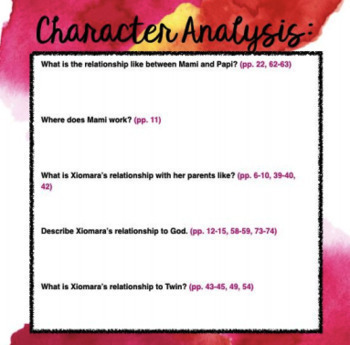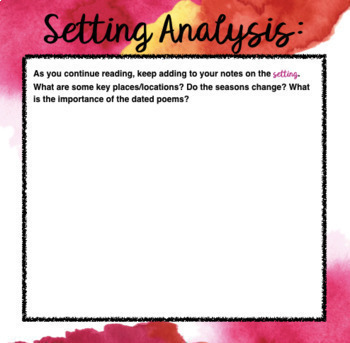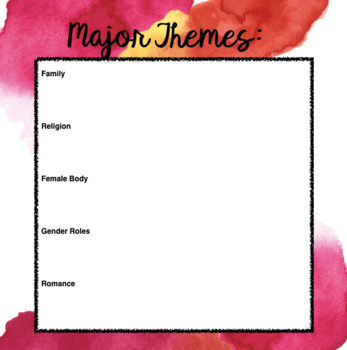The Poet X by Elizabeth Acevedo - Complete Novel Study
- PDF
Description
(Link available to editable file that allows instructor to easily differentiate novel study material as well as make any other necessary changes.)
This novel study is opens with a brief overview of key poetic terms (in general, but esp. for this novel) to help students become more familiar with the poetic form of the novel, There is a brief history about slam poetry (and some links at the end of the presentation, if the instructor wants this to be a research topic). After that, there's an inquiry into the author's background (and a possible research query about her near the end of the presentation, if the instructor wants to use this). I've also included a link to a hilarious scene from 22 Jump Street where Jonah Hill performs a bit of slam poetry--the language is all clean. It's a fun little intro to slam poetry before really delving in!
Next, there is a brief overview of the novel's point of view before the novel study moves into plot summaries. There are three plot summary sections to reflect the three parts of the novel. I have put in my own summaries, but these is meant for the instructor/as notes. Otherwise, I have included helpful questions for each section to guide the students in writing their own plot summaries. Or, the more advanced students can fill in the summary sections entirely on their own.
Then, I have also included in-depth analyses of setting, characters, and theme. There are guided reading questions, character lists, and themes as well. However, I have made it so the teacher can keep or eliminate the reading questions--depending on student needs or intended difficulty level. There are also challenge questions following the Major Themes section if the teacher wants to provide additional work for advanced students. I have laid out the major themes and characters, but I have also provided empty space for students to fill in these parts, too. (There are also plenty of extra slides for overflow-notes!)
Additionally, I have listed many page numbers to point to specific places in the text that help guide the students. However, I have included slides with the same questions but have REMOVED the page numbers if the teachers want the students to find their own textual evidence. This is an excellent novel study for a differentiated classroom. The instructor can leave the page numbers in for students who need more guidance, remove the page numbers for intermediate students, and altogether delete some guiding questions for the most advanced learners!
I’ve included extras of just about every slide so that instructors can adjust accordingly.





